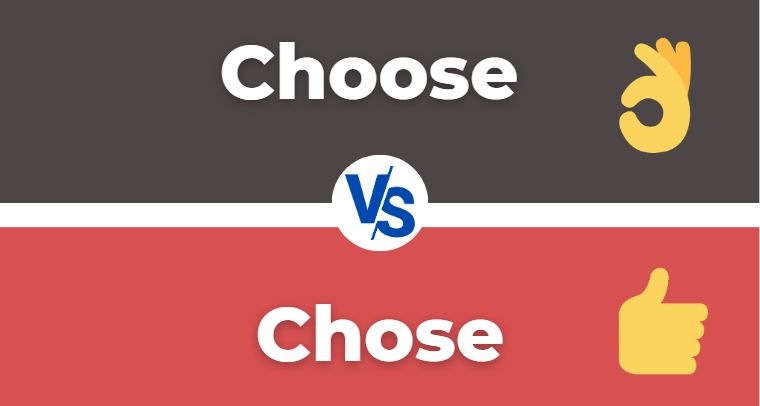Mastering the Difference Between “Choose” and “Chose”
Grammar can be tricky, and even the most seasoned writers can make mistakes. Today, we’re going to tackle one of the most confusing pairs of words: “choose” and “chose.” These two words may look similar, but they have different meanings and uses.
Understanding the difference between them can significantly impact how your writing is perceived. Let’s dive in and learn the correct usage of “choose” and “chose.” By the end of this post, you’ll have a better grasp of these two words and be able to use them correctly in your writing.
What Is the Difference Between “Choose” and “Chose”?
“Choose” and “chose” are two forms of the same verb, “to choose.” The main difference between them is that “choose” is the present tense, while “chose” is the past tense.
- Choose is used to refer to an action happening right now or in the future.
- Example: “I will choose a book to read tonight.” (present tense)
- Chose is used to refer to an action that has already happened.
- Example: “Yesterday, I chose a book to read.” (past tense)
In general, use the present tense “choose” for current or future actions and the past tense “chose” for actions that have already happened.
When to Use “Choose”
Use “choose” when you want to express the act of making a decision or selecting from several options:
- “I need to choose a dress to wear to the wedding.”
- “Which movie do you want to watch? You can choose anyone from this list.”
- “I always choose the window seat on an airplane.”
- “Let’s choose a restaurant that serves vegan food.”
In each example, the speaker is making a decision or selection from a range of possibilities. Remember, “choose” is for current or future decisions.
When to Use “Chose”
Use “chose” when you want to talk about a decision or action that occurred in the past. Here are some examples:
- “Yesterday, I chose the red shirt instead of the blue one.”
- “When I was a child, I always chose vanilla ice cream.”
- “She chose to study medicine in college.”
- “He chose to resign from his job rather than accept a pay cut.”
In each example, the speaker is discussing a decision made in the past.
Common Mistakes with “Choose” vs. “Chose”
It’s common to mix up “choose” and “chose.” Remember, “choose” is the present tense, while “chose” is the past tense. Using the correct tense ensures your message is clear:
- Incorrect: “I choose a red shirt yesterday.”
- Correct: “I chose a red shirt yesterday.”
Tips for Avoiding Grammar Errors
To avoid mixing up “choose” and “chose,” remember this simple rule: use “chose” for past decisions and “choose” for present or future decisions. Keeping this in mind will help you avoid common grammar mistakes.
- Present/Future: “I am going to choose a salad for dinner.”
- Past: “Yesterday, I chose to order pizza.”
Mastering “Choose” vs. “Chose”
Understanding when to use “choose” and “chose” is crucial for clear communication. “Choose” refers to selecting something now or in the future, while “chose” refers to a past decision. If you’re unsure, think about the timing of the action to choose the correct term.
Conclusion
Now that you understand the difference between “choose” and “chose,” you can use them confidently in your writing. Remember to use “choose” for present or future actions and “chose” for past actions. With this knowledge, you can avoid common grammar mistakes and impress your audience with clear and concise communication. Keep practicing, and soon enough, choosing between these two words will become second nature. Happy writing!
